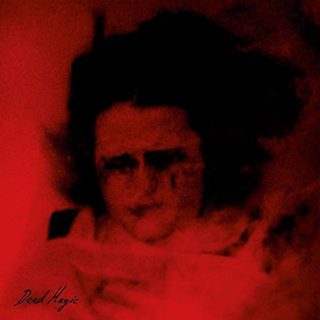Anna von Hausswolff
Dead Magic
9/10

9/10
Nose-diving into the world of Anna Von Hausswolff can be disorientating at the best of times. Taking the title of Gothenburg’s gloomiest composer on one track, she can suddenly transform into (open brackets) “alternative” music’s sweetest soprano on the next. She is punk rock’s favourite Debussy alongside being folk-metal’s answer to Chopin, and the truest indication – if ever there was one – that you don’t know as much about musical tropes as you thought you did.
Dwarfing 2015’s ‘The Miraculous’ with her fourth collection, ‘Dead Magic’ sees the Acusticum Pipe Organ swapped out for a 20th Century organ at Copenhagen’s Marmorkirken (The Marble Church), one of Scandinavia’s biggest religious sites. Located on a balcony within the domed roof, the resulting sound is engulfing, architecting a spherical reverberation that recalls celebration as much as pain, rejuvenation as much as passing, meticulously produced by Randall Dunn (Sunn O))), Earth, Wolves in the Throne Room).
‘The Truth, The Glow, The Fall’ – a 12-minute radio-unfriendly epic – expands into huge sonic spaces, experimenting in the in-betweens of folklore and biblical beginnings, while ‘Ugly and Vengeful’ heralds her most impressive composition (at times sounding like a droning intonation, at others a woozy and discordant carousel). ‘The Mysterious Vanishing of Electra’ drums to an anarchic beat, where soaring vocals cackle down to hysteria, before organ-only ‘The Marble Eye’ is completely suffused in its own acoustics.
Of the five tracks, ‘Källans Återuppståndelse’ is the most surprising, standing out as a beautiful vocal track, set against a minimalist organ part. As she started the record on the fall, she has ended it on the resurrection, with a plea for someone to confront their own creativity.
‘Dead Magic’ is as much a thematic record as it is a colour-me-in book, or a dot-the-dots where the numbers have been left out… and so have the dots. Anna Von Hausswolff has fashioned a truly immersive beast, where folklore runs free and where open fissures are as common as wild flowers growing. But you are invited in, and with such goodwill that to criticise the album is simply to criticise your place within it.